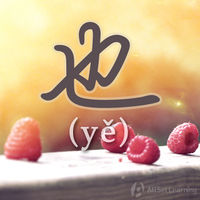Difference between revisions of "Main Page"
| Line 32: | Line 32: | ||
| class="MainPageBG" style="width:50%; border:1px solid #cef2e0; background:#f5fffa; vertical-align:top; color:#000;" | | | class="MainPageBG" style="width:50%; border:1px solid #cef2e0; background:#f5fffa; vertical-align:top; color:#000;" | | ||
{| id="mp-left" style="width:100%; vertical-align:top; background:#f5fffa;" | {| id="mp-left" style="width:100%; vertical-align:top; background:#f5fffa;" | ||
| − | ! style="padding:2px;" | <h2 id="mp-tfa-h2" style="margin:3px; background:#cef2e0; font-size:120%; font-weight:bold; border:1px solid #a3bfb1; text-align:left; color:#000; padding:0.2em 0.4em;">Featured Article: [[ | + | ! style="padding:2px;" | <h2 id="mp-tfa-h2" style="margin:3px; background:#cef2e0; font-size:120%; font-weight:bold; border:1px solid #a3bfb1; text-align:left; color:#000; padding:0.2em 0.4em;">Featured Article: [[The "also" adverb|The "also" adverb "ye"]] (A1)</h2> |
|- | |- | ||
| style="color:#000;" | <div id="mp-tfa" style="padding:2px 5px"> | | style="color:#000;" | <div id="mp-tfa" style="padding:2px 5px"> | ||
| − | [[File:Chinese-grammar-wiki- | + | [[File:Chinese-grammar-wiki-ye.jpg|200px|left|也 (yě)]] |
| − | + | In Chinese, every use of the word "also" sounds like a celebration: 也 (yě)! And the reason for celebration is that this compact adverb is super easy to use. There's just one little thing to keep in mind: it can't come at the end of a sentence like "too" can in English. As long as you steer clear of that issue, you'll have mastered '''[[the "also" adverb]]''' in no time! | |
</div><!-- /FEATURED GRAMMAR POINT --> | </div><!-- /FEATURED GRAMMAR POINT --> | ||
|} | |} | ||
Revision as of 03:45, 4 August 2014
|
|
|
|
|
|
|
|
|
About AllSet Learning
AllSet Learning is a Shanghai-based learning consultancy dedicated to helping foreigners better learn Mandarin Chinese. This wiki is maintained by John Pasden and the rest of the team at AllSet Learning. While many of the company's services are only available to clients physically in Shanghai, this wiki is open to the public through a Creative Commons license.
You can also find us on Facebook, on Twitter, and on Google+.
All content on this wiki © AllSet Learning, and may not be reproduced without attributions or used for commercial purposes.










